Has anyone tried putting an exciter inside of a periodic structure? (sphere, cylinder, squashed version of them) This would eliminate boundary effects. I haven't read enough about excitors to have an idea of whether you can actually excite such a structure, though.
I have tried it in a cube shaped 6"*6"*6" structure but it sounded very bad..dosent work that way in my opinion
How has it worked out for you? I figure it would be along the lines of a F.A.S.T. type system. ....
Pretty good I'd say. Some of the merits (already mentioned before) are good enough for me to give up horns and play with these cheapo drivers and various boards... etc.
I got 40Hz or so at the low end at the best case, but it's still not enough for me, so I use subs. Then, since subs came for help, there's no reason to push the main board all the way down. 80~100Hz is easy for a decent size board.
The top end is trickier. Sometimes you just can't get good enough top octave from some types of panels. A flattened drop above 10kHz is typical. If that's the case, then reinforcing the board (to get better rigidity) is the way to go instead of adding a super tweeter. Because one of the merits is the almost omni dispersion. Ver few super tweeter can do that. When done right, it can play beyond 20kHz. (It's pretty amazing to hear an HF unit in such size and dispersion.)
This thing looks easy (and funny or even laughable) at the first sight. It's also easy to get a fresh first impression by its refreshing sound. The hard part is refining it -- solving all kinds of problems while retaining the good parts.
Sounds promising! On another forum, a member(Zygadr) discusses using VH EPS styrofoam, I live in the same city as him(30 min drive to that foam shop), so will be using that exact foam as a first material and 3mm ply as well for comparison. Hopefully even the size panel I'm looking at will do 80hz at mid 80db sensitivity , as then I can use 4 for front L&R and rear L&R in my main TV room for TV and basic stereo use with My dual 8" sub(aaron sub-120) which is a lovely punchy sub.
I am building a dedicated theatre with lots of power and high efficiency speakers so in my tv room its adequate. I will attempt an nxt centre panel as well for the tv room but as it will be a different size and shape I don't know how that will affect sound? I was thinking one of the large hollow areas of the TV cabinet(it's basically 3 cubes, the outer 2 have glass doors, the other has no door and has the current centre speaker) and making a panel(VH EPS) that is almost the exact size of the opening and removing the back of that 'cube' so its semi OB if that makes sense. Then fitting a black cloth grille over the whole thing for protection/invisibility.
My goal are stylish, very thin panel type speakers that will sound 'acceptable' and by that i mean if its any better than HT in a box 3" speakers then I'm happy
I am building a dedicated theatre with lots of power and high efficiency speakers so in my tv room its adequate. I will attempt an nxt centre panel as well for the tv room but as it will be a different size and shape I don't know how that will affect sound? I was thinking one of the large hollow areas of the TV cabinet(it's basically 3 cubes, the outer 2 have glass doors, the other has no door and has the current centre speaker) and making a panel(VH EPS) that is almost the exact size of the opening and removing the back of that 'cube' so its semi OB if that makes sense. Then fitting a black cloth grille over the whole thing for protection/invisibility.
My goal are stylish, very thin panel type speakers that will sound 'acceptable' and by that i mean if its any better than HT in a box 3" speakers then I'm happy
Last edited:
Like many other things, bigger is better.
And, one of the major character of DML is very wide dispersion. So in the experiment stage, it'd be better to try it in a relatively open space first.
It can easily out-perform ordinary 3" speaker in a box in many ways, but stuffing it in a TV cabinet will probably degrade too much of its performance.
Have fun and good luck.
And, one of the major character of DML is very wide dispersion. So in the experiment stage, it'd be better to try it in a relatively open space first.
It can easily out-perform ordinary 3" speaker in a box in many ways, but stuffing it in a TV cabinet will probably degrade too much of its performance.
Have fun and good luck.
Hmm, I figured putting it into a cabinet may be a problem, it will essentially be a 400mm deep frame but it will still create a 'cavity' and a long path for the sound to get around. Maybe if i line it appropriately I might be ok. Or maybe just have no centre? I could perhaps use that cavity for a subwoofer, and seeing as it will be directly btween the two panels may be good for imaging?
I have also considered some standard cone drivers for 80-250hz or so in flat panel designs, Visaton does a 31mm thick 5.25" woofer with highish qts that might be worth a look(4 per panel) with a simple 1st order crossover or something. Lots of experimenting to do!
Thanks for the info
I have also considered some standard cone drivers for 80-250hz or so in flat panel designs, Visaton does a 31mm thick 5.25" woofer with highish qts that might be worth a look(4 per panel) with a simple 1st order crossover or something. Lots of experimenting to do!
Thanks for the info
That's a bummer. I was hoping that with the decorrelated excitations we can get away with something like a pulsating sphere without cancellations (and with the ability to make it rigid with cross spokes). If I buy exciters at some point I'll surely experiment anyway. 
@CLS - do you have any measurements of your giant panel?
@CLS - do you have any measurements of your giant panel?
I have tried it in a cube shaped 6"*6"*6" structure but it sounded very bad..dosent work that way in my opinion
Hi,
The only thing I have is very rough RTA to show the overall in room response. It's far from ideal to tell how this thing work. (Besides, my system is 2-way active / 3 front channels. Now this DML panel is only used in central above 80Hz or so...)
And DML is hard to measure correctly -- or, the traditional measurements don't reveal its performance properly. Like other wide dispersion devices, it's highly room/location-dependent. Correct or proper measurement for this thing is far beyond my capability.
About the shape, I think you don't want to enclose the vibrating sufaces. An excited flat surface is already splashing everywhere, so anything enclosed would be a waste of SPL (and further problem in resonaces inside that space).
Happy experiment anyway. Without doubt, it'd be an excellent toy with very high potential to get very good sound.
The only thing I have is very rough RTA to show the overall in room response. It's far from ideal to tell how this thing work. (Besides, my system is 2-way active / 3 front channels. Now this DML panel is only used in central above 80Hz or so...)
And DML is hard to measure correctly -- or, the traditional measurements don't reveal its performance properly. Like other wide dispersion devices, it's highly room/location-dependent. Correct or proper measurement for this thing is far beyond my capability.
About the shape, I think you don't want to enclose the vibrating sufaces. An excited flat surface is already splashing everywhere, so anything enclosed would be a waste of SPL (and further problem in resonaces inside that space).
Happy experiment anyway. Without doubt, it'd be an excellent toy with very high potential to get very good sound.
Your speakers would be very high or very tall, the space between floorboards is less than the space under floorboards, you could always try it. I have got 9 60 x 40cm full range planars hanging from the ceiling. They are not over floor loaded tho'. Just open backed.Do you live in a detached house if not the neighbours would be very unhappy. With plates shaking off shelves!
I'm not sure if you're directing that at me, but I have concrete floors (no gap underneath) and then floor to ceiling is 2.4mt or 8 ft, and the roof is a large open space. Its a free-standing 2500ft2 home with no adjoining neighbours  I have considered in roof OB subwoofers, Theres heaps of space up there and the roof joists are 45cm spaced hard wood(very strong roof)
I have considered in roof OB subwoofers, Theres heaps of space up there and the roof joists are 45cm spaced hard wood(very strong roof)
The NXT panels I plan to build will only be 100hz and up, probably 30cm wide and 90 cm high mounted in a frame of probably 35cm width and 120cm height with tha panel towards the top, basically largish floor standing speaker size i guess
Not many people in Australia have adjoining walls with neighbours, the joys of living in such a big country!
The NXT panels I plan to build will only be 100hz and up, probably 30cm wide and 90 cm high mounted in a frame of probably 35cm width and 120cm height with tha panel towards the top, basically largish floor standing speaker size i guess
Not many people in Australia have adjoining walls with neighbours, the joys of living in such a big country!
I'd suggest trying wider (or overall larger) panel as you can, even at the very beginning experimental stage. Try the board-driver combination first, and then go building the frame (if you really need one).
It's inevitable to meet a lot of trial-and-errors in this game. Be prepared. Although all other audio DIY activities also need trial-and-errors, this one is the king. Being cheap, it's easily overlooked. Very soon you'll have a pile of wasted material.
It's inevitable to meet a lot of trial-and-errors in this game. Be prepared. Although all other audio DIY activities also need trial-and-errors, this one is the king. Being cheap, it's easily overlooked. Very soon you'll have a pile of wasted material.
I only have limited room where I want these to go, so large panels are just not gonna happen. It' a big area that theyre going into, and I have zero requirement for them to do less than 80hz or big spl. I will probably just have fun with them anyway, but it will only be for experimentation. They wont stay big for long! I can build a longer panel (say 150cm) but they cant go much wider!
Waiting for exciters in the post is annoying, I want to try them out!
Waiting for exciters in the post is annoying, I want to try them out!
Lunchietey wrote:
"
I know the whole point of most people's NXT experiments have been to build truly full range and usable panels but has anyone tried a 2 way?
I was thinking a smaller panel(say 300mm x 750mm ish
"
Hi,
from my tests, I would say that by trying to use DML the way we were doing with piston loudspeakers, we miss most of the advantages DML can offer.
In fact when considering amplitude response or distorsion, classic loudspeakers are better, no question... but when looking at surface of radiation, angle of radiation, phase variation, DMLs brings us to a better level with fewer efforts.
so my 2cents is, go with the biggest bad panels you can afford,
don't strive for ultralow weight panels, they do zero bass,
instead find some serious drivers (say 20W) and that's it !
POL
"
I know the whole point of most people's NXT experiments have been to build truly full range and usable panels but has anyone tried a 2 way?
I was thinking a smaller panel(say 300mm x 750mm ish
"
Hi,
from my tests, I would say that by trying to use DML the way we were doing with piston loudspeakers, we miss most of the advantages DML can offer.
In fact when considering amplitude response or distorsion, classic loudspeakers are better, no question... but when looking at surface of radiation, angle of radiation, phase variation, DMLs brings us to a better level with fewer efforts.
so my 2cents is, go with the biggest bad panels you can afford,
don't strive for ultralow weight panels, they do zero bass,
instead find some serious drivers (say 20W) and that's it !
POL
Well I finally got to do preliminary tests. I'm yet to go up and get the EPS that zygadr used, but did find standard 10mm sheets locally for the first test.
The sheets I have are 600 x 1200 with the driver mounted roughly in the no 1 position on the nxt whitepaper. I used very thin double sided tape(no foam) however I also retained NXT's white mounting feet/basket
Well I was surprised that such fullrange sound could come from this, and SPL although limited was ok for the room it was in. Sound had moments of great clarity, followed by shreaking upper mid. Best description I can give is a cheap oem car door speaker. Bass was heavily dependant on distance from the wall like all open back drivers but could still go deep-ish.
I have a feeling I'm going to fall in to the 'usual' trap, be initially encouraged, then experiment soooo much for little improvement. These foam sheets are too flimsy though, so I'll get the other ones first You could really see the edges moving and self noise on bass was easily audible. Still very interesting!
You could really see the edges moving and self noise on bass was easily audible. Still very interesting!
The sheets I have are 600 x 1200 with the driver mounted roughly in the no 1 position on the nxt whitepaper. I used very thin double sided tape(no foam) however I also retained NXT's white mounting feet/basket
Well I was surprised that such fullrange sound could come from this, and SPL although limited was ok for the room it was in. Sound had moments of great clarity, followed by shreaking upper mid. Best description I can give is a cheap oem car door speaker. Bass was heavily dependant on distance from the wall like all open back drivers but could still go deep-ish.
I have a feeling I'm going to fall in to the 'usual' trap, be initially encouraged, then experiment soooo much for little improvement. These foam sheets are too flimsy though, so I'll get the other ones first
Another curved foamcore panel
The last project in post #576 was not good enough (as always), the wooden spine - also the 'bridge' - is too soft and eats up too much vibration energy from the drivers. Also, this spine restricts the vibration along vertical line. All these factors make the efficiency too low. It sounds smooth but too quiet. So I moved on.
The new one is also a curved 3mm thick foamcore board, but this time there's no spine or ribs whatsoever. The board was bent by applying tension between sides - pulling it into a curve. Diluted PVA glue was applied on paper of both surfaces while it's bent. (Wetted paper becomes very soft and it can be bent too hard, if you use thick rubber band for the tension...)
When dried, the curvy shape was pretty much fixed. No more external tension is needed. At this stage, the overall rigidity is much improved (related to an untreated board). I think this is better than adding wooden ribs, spine or the likes.
Now this board can play upto 20kHz pretty flat. The famous flat drop above 10kHz of this material is much improved.
But, this sandwitch structure - with very different densities of layers - is still causing trouble in HF. The vibration is interrupted and reflected between junctions, causing resonance(s). This time I got a peak at 7.2kHz with more than 10dB amplitude.
I think vibration going through the layers of this sandwitch should be avoided. So I tried this - at the position to be driven, in a small area of rear surface, I cut off the coated paper, and carved the core off, left the front paper intact carefully. A piece of plywood is inserted into this recess.
By this, the driving force can reach the front surface (almost) directly because the plywood is much more dense and rigid than foam. It turned out very good, the resonant peak is gone completely.
This is a 5-unit panel, with only one unit driven at full amplitude and other 4 attenuated (to different degrees). 2 of them are wired in normal polarity and other 3 in reversed. It's now the center channel of a 3-ch linear matrix.
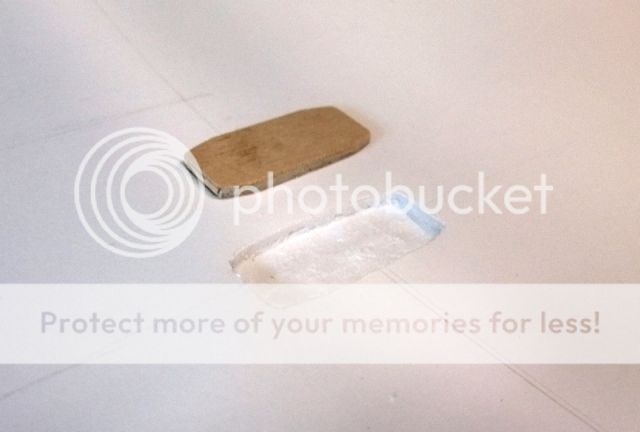
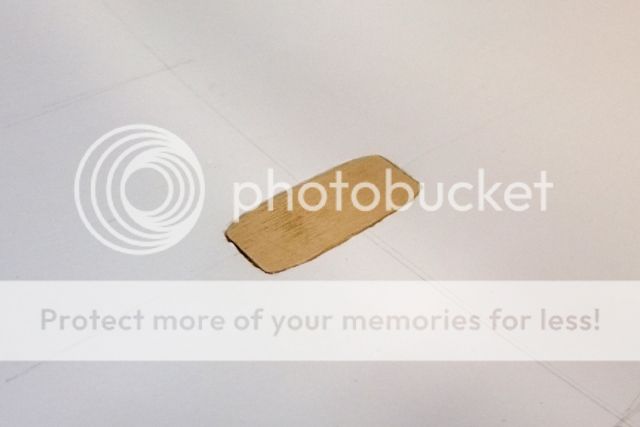
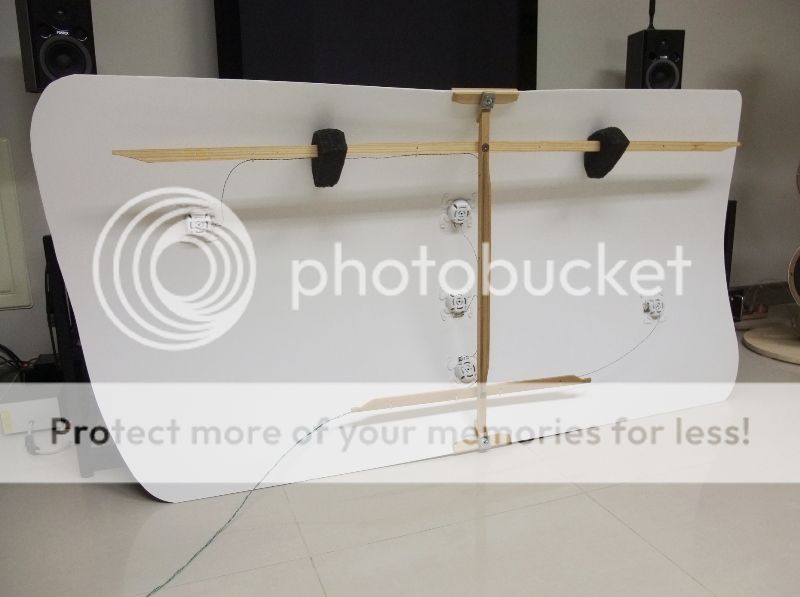
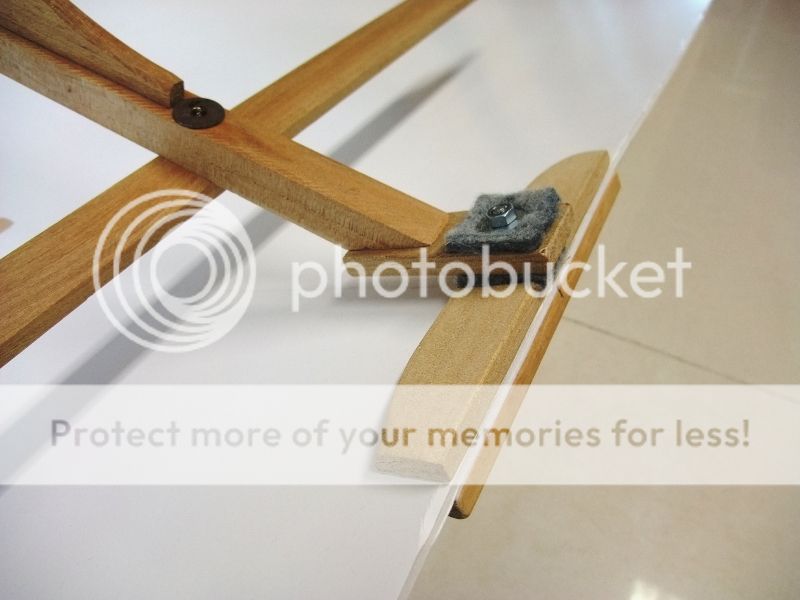
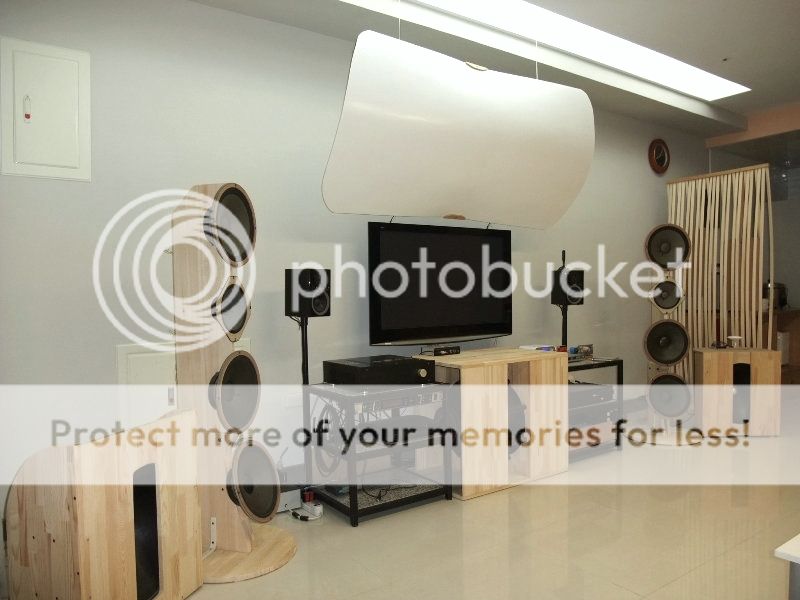
The last project in post #576 was not good enough (as always), the wooden spine - also the 'bridge' - is too soft and eats up too much vibration energy from the drivers. Also, this spine restricts the vibration along vertical line. All these factors make the efficiency too low. It sounds smooth but too quiet. So I moved on.
The new one is also a curved 3mm thick foamcore board, but this time there's no spine or ribs whatsoever. The board was bent by applying tension between sides - pulling it into a curve. Diluted PVA glue was applied on paper of both surfaces while it's bent. (Wetted paper becomes very soft and it can be bent too hard, if you use thick rubber band for the tension...)
When dried, the curvy shape was pretty much fixed. No more external tension is needed. At this stage, the overall rigidity is much improved (related to an untreated board). I think this is better than adding wooden ribs, spine or the likes.
Now this board can play upto 20kHz pretty flat. The famous flat drop above 10kHz of this material is much improved.
But, this sandwitch structure - with very different densities of layers - is still causing trouble in HF. The vibration is interrupted and reflected between junctions, causing resonance(s). This time I got a peak at 7.2kHz with more than 10dB amplitude.
I think vibration going through the layers of this sandwitch should be avoided. So I tried this - at the position to be driven, in a small area of rear surface, I cut off the coated paper, and carved the core off, left the front paper intact carefully. A piece of plywood is inserted into this recess.
By this, the driving force can reach the front surface (almost) directly because the plywood is much more dense and rigid than foam. It turned out very good, the resonant peak is gone completely.
This is a 5-unit panel, with only one unit driven at full amplitude and other 4 attenuated (to different degrees). 2 of them are wired in normal polarity and other 3 in reversed. It's now the center channel of a 3-ch linear matrix.





You bet 
Rule no.1 of DML is the panel should be light and rigid. (So we may see the commercial products are bragging for their hi-tech panel material -- synthetic fiber honeycomb board which is not available in retail market...)
By any certain material, a curvy surface is inherently more rigid than a flat one. So this is indeed better than my previous flat panels with the same material. Flat panels reinforced by ribs can be good, too, but there'd be problem in the discontinuous of structure and vibration propagation, especially the ribs are made of different materials.
Panels of DML and sound boards of musical instruments have a lot in common. The major difference is DML needs more damping for shorter decay and avoiding certain resonances. Following this concept, I've been building panels by imitating sound boards of musical instruments.
Piano and guitar have ribs on their sound boards, I've tried to imitate them on the panels previously. Without ideal and identical material of board itself and ribs, I got half-baked results -- improved but also coming with other problems.
Violin (and families) has curvy sound board without ribs. This is what I tried to imitate in this build. It turned out pretty good, more or less as my expectation. A bonus from the curvy surface is better self-damping. I guess both the shape and pretensioned structure contribute.
Oh, there's one thing very important. I'm not saying curved foamcore board is the optimal solution (for DIY DML), it's just one pretty good attempt on what I have on hand. This is the charm (and nightmare at the same time) of this thing -- endless possibilities which are so easily accessible.
And yes, flooder tweeters are still there on side channels, unseen behind the naked array. They are relatively small but still important to the whole system.
Rule no.1 of DML is the panel should be light and rigid. (So we may see the commercial products are bragging for their hi-tech panel material -- synthetic fiber honeycomb board which is not available in retail market...)
By any certain material, a curvy surface is inherently more rigid than a flat one. So this is indeed better than my previous flat panels with the same material. Flat panels reinforced by ribs can be good, too, but there'd be problem in the discontinuous of structure and vibration propagation, especially the ribs are made of different materials.
Panels of DML and sound boards of musical instruments have a lot in common. The major difference is DML needs more damping for shorter decay and avoiding certain resonances. Following this concept, I've been building panels by imitating sound boards of musical instruments.
Piano and guitar have ribs on their sound boards, I've tried to imitate them on the panels previously. Without ideal and identical material of board itself and ribs, I got half-baked results -- improved but also coming with other problems.
Violin (and families) has curvy sound board without ribs. This is what I tried to imitate in this build. It turned out pretty good, more or less as my expectation. A bonus from the curvy surface is better self-damping. I guess both the shape and pretensioned structure contribute.
Oh, there's one thing very important. I'm not saying curved foamcore board is the optimal solution (for DIY DML), it's just one pretty good attempt on what I have on hand. This is the charm (and nightmare at the same time) of this thing -- endless possibilities which are so easily accessible.
And yes, flooder tweeters are still there on side channels, unseen behind the naked array. They are relatively small but still important to the whole system.
Last edited:
- Status
- This old topic is closed. If you want to reopen this topic, contact a moderator using the "Report Post" button.
- Home
- Loudspeakers
- Planars & Exotics
- PIEZO NXT type panel